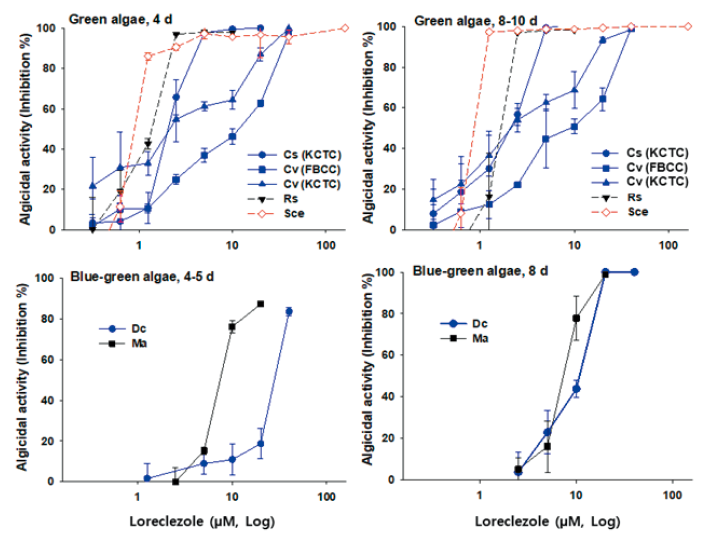Abstract
This study was conducted to investigate the biological activities of loreclezole on the various microalgae and plant species. Loreclezole roughly showed a broad algicidal spectrum with a active rate of 2.0-35 μM. Among the tested green algae, there was sensitive response in the order of Scenedesmus spp.>Raphidocelis subcapitata>
Figures & Tables

Fig. 1. Algicidal activities of loreclezole on the various microalgae according to the increase of incubation time after chemical treatment. Abbreviation of microalgae species used in this experiment was designated in Table 1.


